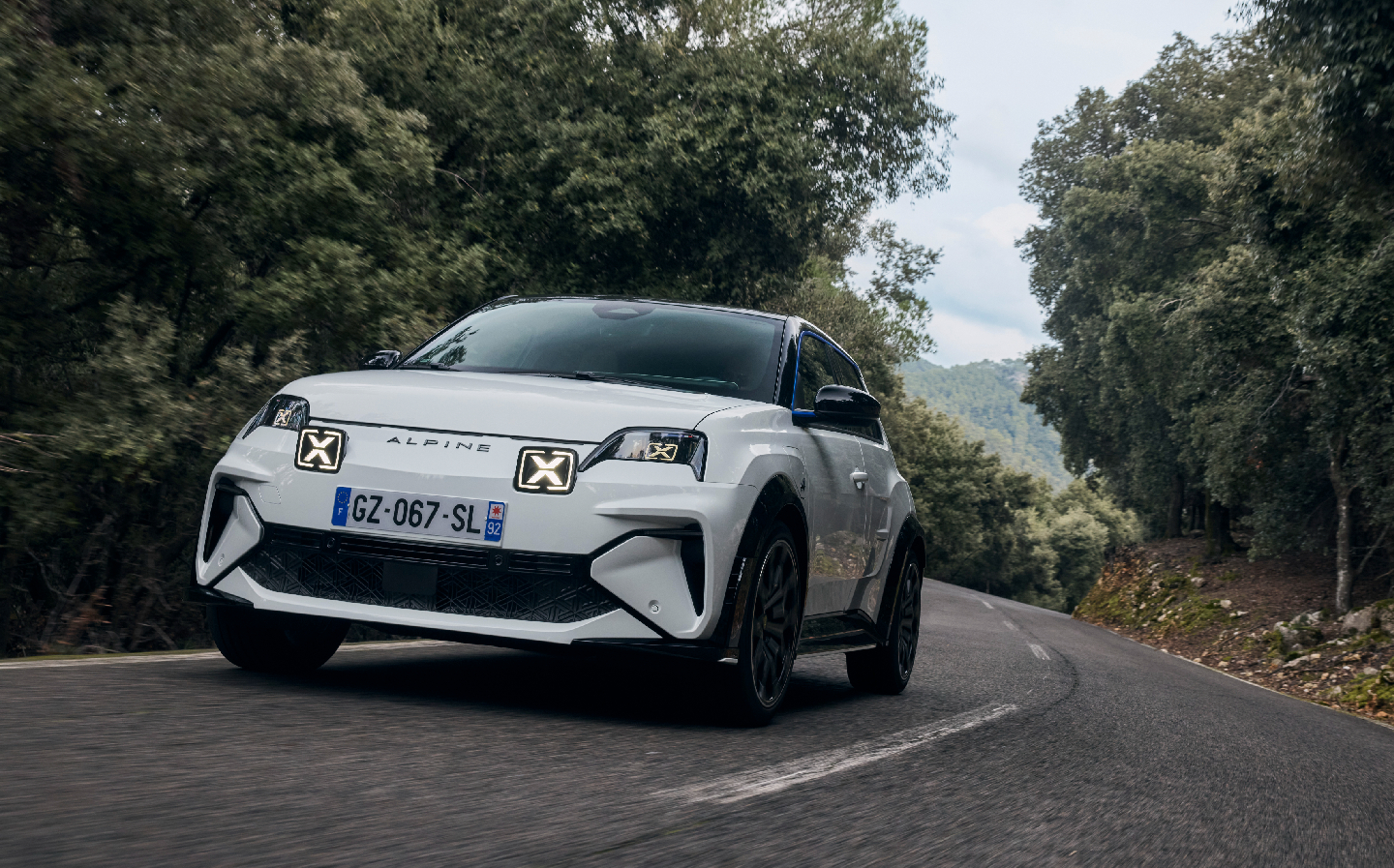Alpine A290 2025 review: A fun electric hot hatch ... but not quite hot enough
Eh, too puny
You wait ages for a decent electric hot hatch and then several turn up at once. In the last few months we’ve had the Alfa Romeo Junior Veloce and Abarth 600e (review to follow this week), and now the car you can see here: the Alpine A290.
It’s fair to say the Alpine is one of the most highly anticipated of the bunch, too. Based on the uber-cool Renault 5, the A290 already enjoyed desirability thanks to its retro but muscular looks. And then it turned out the R5 is a five-star car with a superb chassis, and that has resulted in exceptions for the Alpine A290 going stratospheric. Surely Renault’s sports arm has taken something great and made it even greater?
On paper things look encouraging. Alpine has managed to keep the weight down to 1,479kg, which is light for an EV that has a claimed range (over a mix of roads, in fair conditions, if you’re careful, etc…) of up to 236 miles for the 177bhp GT and GT premium versions, or 226 miles for the range-topping GTS, which has the same motor but turned up to 217bhp.
The latter can manage 0-62mph in 6.4sec, which once upon a time was rocketship acceleration but these days is fairly standard for a hot hatch, and almost identical to the petrol-powered VW Golf GTI or Ford Fiesta ST. Notably, it’s also slower than the A290’s chief rivals, the Junior Veloce and 600e — both 5.9sec, as they share the same, more powerful, 278bhp motor.
As with those cars, significant work has gone into making the A290’s chassis sportier than that of its donor. That means new, stiffer suspension (though exactly how much stiffer the engineers wouldn’t tell us) with hydraulic bump stops, which are designed to dampen the jolts caused by major bumps. The back end already benefits from sports-derived independent multi-link suspension, as you’ll also find that on the R5, plus new anti-roll bars front and rear.

Most significantly, though, the wheels have been pushed out wider by 60mm, and wider means faster around corners. Also helping on that front are the dedicated EV underpinnings, with a flat battery pack positioned under the floor between the wheels, resulting in a low centre of gravity. And Alpine says the weight distribution front-to-rear is more balanced than a petrol equivalent, at 57:43 rather than around 65:35.
What the Alpine A290 doesn’t have, unlike the Alfa and Abarth in this electric hot hatch trio, is a mechanical limited slip differential between the front wheels, to help distribute torque (twisting force) to the driven wheels. During our press conference the chief engineer claimed that they decided it wasn’t necessary to fit one, as they “got good results” from the electronic torque vectoring (braking of individual wheels) that governs such things.
Alpine has added four driving modes — Save, Normal, Sport and Personal — each of which alter the steering feel, throttle response and that torque vectoring, with Sport mode giving drivers the full beans while also automatically slowing the inside wheels to help the car take corners more sharply. In Personal, its strength can be adjusted front and rear to fine-tune the “pivot point” of the car. And you can keep this switched on when you switch off the ESC and traction control systems, for optimum feel on the track.
The proof is in the pudding, of course, and so, having been impressed by the R5 and the Italian hot hatch EVs mentioned above, I was looking forward to getting out on the road and track with the French contender.
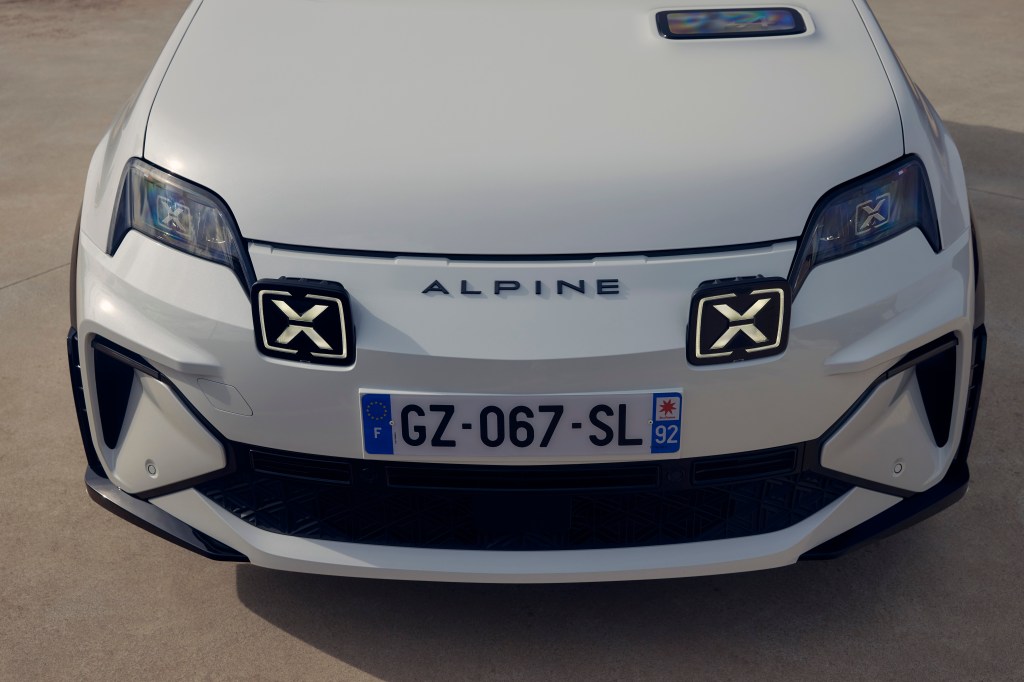
And first impressions are good. It has a muscular stance and slightly more aggressive look than the R5, with those characteristic four lights at the front, each with a cross motif derived from the taped-up spotlights on rally cars.
There are also unique colour schemes and wider 19in wheels that are shod in rubber developed with Michelin over the last two years (though Michelin was also working on them with Alfa and Abarth … shh!). You’ll also notice the A290 has a ducktail rear spoiler and what has been dubbed by the carmaker as the “Alpine Swoosh” — the curved line, with three horizontal creases coming off it, that follows the wheel arch.
Inside is also impressive at first glance, with three key areas made unique by Alpine: the steering wheel, transmission selector and seats. They all certainly look the part, and the steering wheel has been adorned with an F1-inspired dial to adjust the regenerative braking, a drive mode button and a red go-faster button, labelled “OV” (overtake), which you can hold down for a boost of full power for up to 10 seconds.
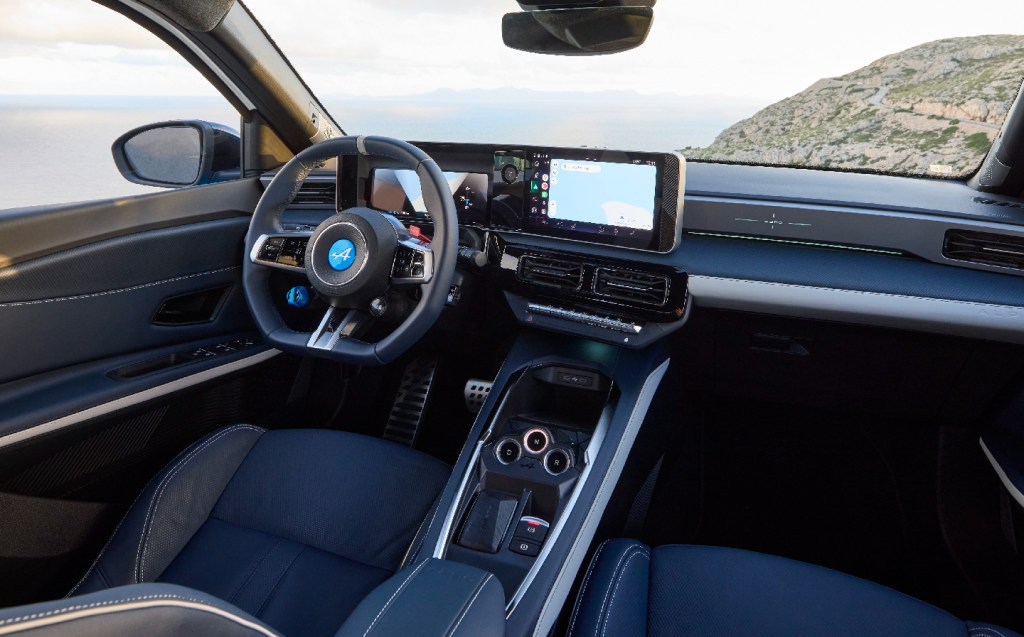
In practice, though, the regen dial is far inferior to paddles behind the wheel, which can be used to increase the braking force when lifting off the accelerator on the approach to corners and then decrease it again on the other side — that’s a genuinely engaging way to drive a hot EV fast. The dial is fiddly and requires you to take one hand off the wheel.
And the OV button is a bit pointless when you get the same full boost by pressing the accelerator fully to the floor, with “kickdown”. Alpine would have been much better off removing these trinkets and putting the stereo controls on the steering wheel, rather than using Renault’s awkwardly-placed stalk behind the wheel.
Also awkward is the driving position, as driver and passenger will feel like they’re perched weirdly high up for such a sporty hatch. And the seats themselves are fine but there’s not quite enough steering reach adjustment, which means tall drivers either have to slide the seat forward to the point where their legs are cramped, or back, with their arms stretched forward. It used to be the Italians that made cars designed for gorillas, not the French.
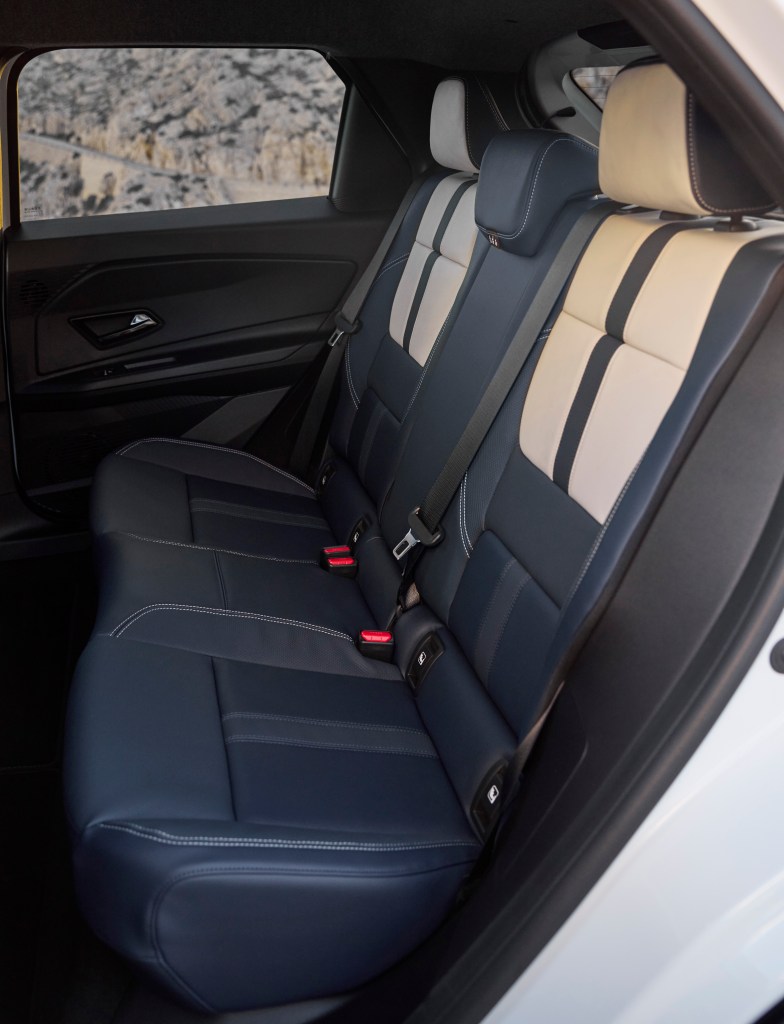
This being a compact car, don’t expect the rear to be roomy, either. The second row is fine for three children if the front passengers aren’t tall, but in my driving position those in the back would have to have legs with a circumference of about two inches at most. And if the front seats are in their lowest position, rear passengers won’t be able to get their feet underneath. Still, there’s decent headroom for six-footers back there, and this isn’t a car designed for ultimate practicality.
Alpine made a big thing about the onboard tech in the A290, and in some ways it’s impressive, with Google built in so that Google Maps navigation is standard, and linked to the battery so that you can see what you remaining range will be when you get to a destination. And if that destination is a charging point, the battery will be pre-conditioned en route by the heat pump, which also comes as standard, and that means faster charging speeds.
On the downside, the menus aren’t the most logically laid out, and while the extra telemetry provided might be useful for some track days, Alpine has also felt the need to add some frills, including a submenu called Challenges whereby drivers are encouraged to set goals — acceleration, lap times, G-force, etc. — and then beat them. Maybe I’m getting old but this kind of gamification I could do without; at best it’s silly, at worst really distracting (though a notification does flash up to say don’t set a challenge while on the move).
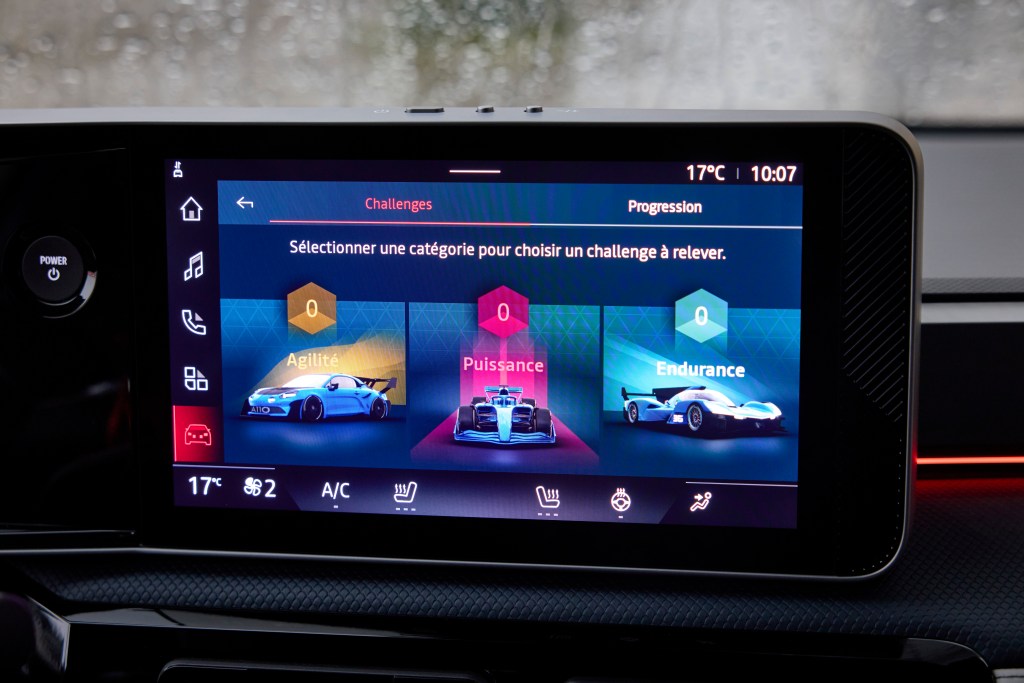
Keep your eyes on the road, though, and there’s better news. Alpine has done wonders with the suspension, retaining the R5’s ability to brush off most bumps and potholes without rattling teeth while increasing the rigidness just enough to make the A290 noticeably more competent on a twisty backroad. There’s still room in there for an even more hardcore suspension set up, without doubt, perhaps with adjustable dampers, though as a compromise between comfort and cornering, it’s nicely judged.
And then we come to the performance, and it’s… well, a little disappointing, frankly. I described the Alfa Junior Veloce as “not lightning quick” like a Tesla Performance model or Porsche Taycan, but as fast as any petrol hot hatch on sale today, and the A290 is similar, but less so. Being a small car means it certainly feels sprightly, and overtakes are fairly effortless at any road-legal speed, but the A290 definitely feels less eager than its rivals, and doesn’t quite feel like enough of a step up from the Renault 5 in outright acceleration.
Out on the track, though, the A290 is unquestionably fun. During my first run I could feel the power being dulled out of low-speed corners by the traction control system, but switch off that and the ESC, and the car becomes much more engaging. You can be quite rough with it, and play with the controls to get a clear sense of where the limits of traction are.
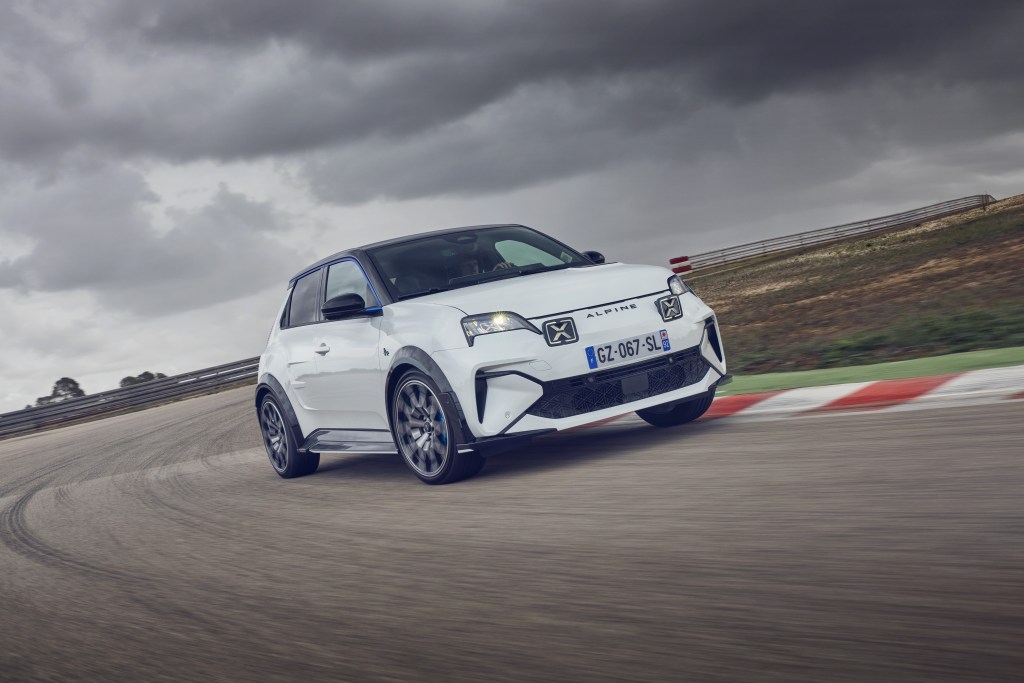
The grip from those Michelins is superb but of course every car has its limits, and finding them in the A290 is a joy thanks to the sublime chassis balance. The body is allowed to roll just enough to provide feedback to the driver, and the brakes are strong and natural-feeling, despite the fact the the pedal is connected to the pads electronically, rather than mechanically.
If only, you think as you exit a corner, there was a dollop of extra poke to help propel you towards the next braking point. The chassis could certainly handle it but, as confirmed by the engineers at the event, 217bhp is the absolute maximum that can be extracted from that powertrain.
Having spoken to the folks at Abarth about the 500e (an even dinkier electric hot hatch), I discovered that turning up the power on an electric motor means more heat, and more heat requires extra cooling for the battery, and then you start getting into packaging problems. I suspect Alpine came across the same issues, as they admitted that the chassis could certainly handle more performance.
Will we ever get it? “Nothing is impossible,” they said, but “it takes time … years of development.”
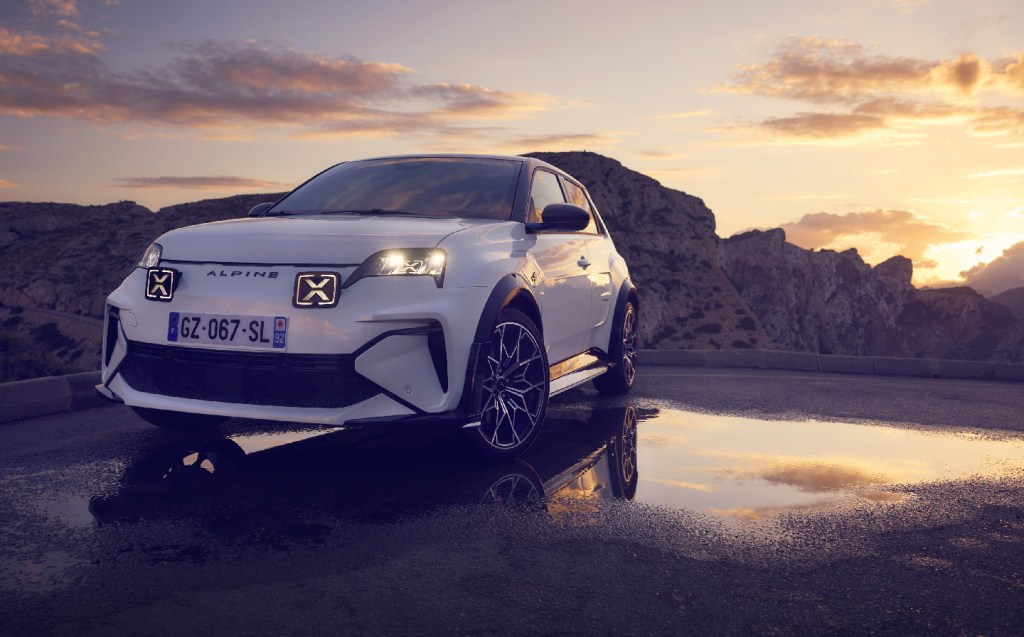
Bring on the A290 Mk2, then, as, with prices expected to start at around £38,000 for the 217bhp GTS models when it goes on sale in February, the little Alpine feels like quite a lot of extra cash for a car that’s not quite enough of a step up from the R5, which costs 10 grand less. A bigger problem might be that its more potent rivals from Italy aren’t a huge amount pricier, meaning going for the Alpine is likely a heart-over-head choice.
Related articles
- If you were interested in the Alpine A290 electric hot hatch, you might like to read our review of the Alfa Romeo Junior Veloce
- Don’t miss our review of the brilliant new Renault 5 electric
- Also check out our review of the 2024 Mini Cooper SE electric hatchback
Latest articles
- Porsche 911 Carrera S 2025 review: Harder, better and faster – but is it the best 911?
- F1 2025 calendar and race reports: The new Formula One season as it happens
- Seven great automotive events to visit this summer, from F1 to art and champagne
- Watch new Porsche 911 GT3 smash Nürburgring record for manual cars
- Skoda Elroq 2025 review: Czech carmaker can’t seem to miss with its electric family cars
- Five best electric cars to buy in 2025
- Should I buy a diesel car in 2025?
- Zeekr 7X AWD 2025 review: A fast, spacious and high tech premium SUV — but someone call the chassis chief
- Denza Z9GT 2025 review: Flawed but sleek 1,062bhp shooting brake from BYD’s luxury arm


